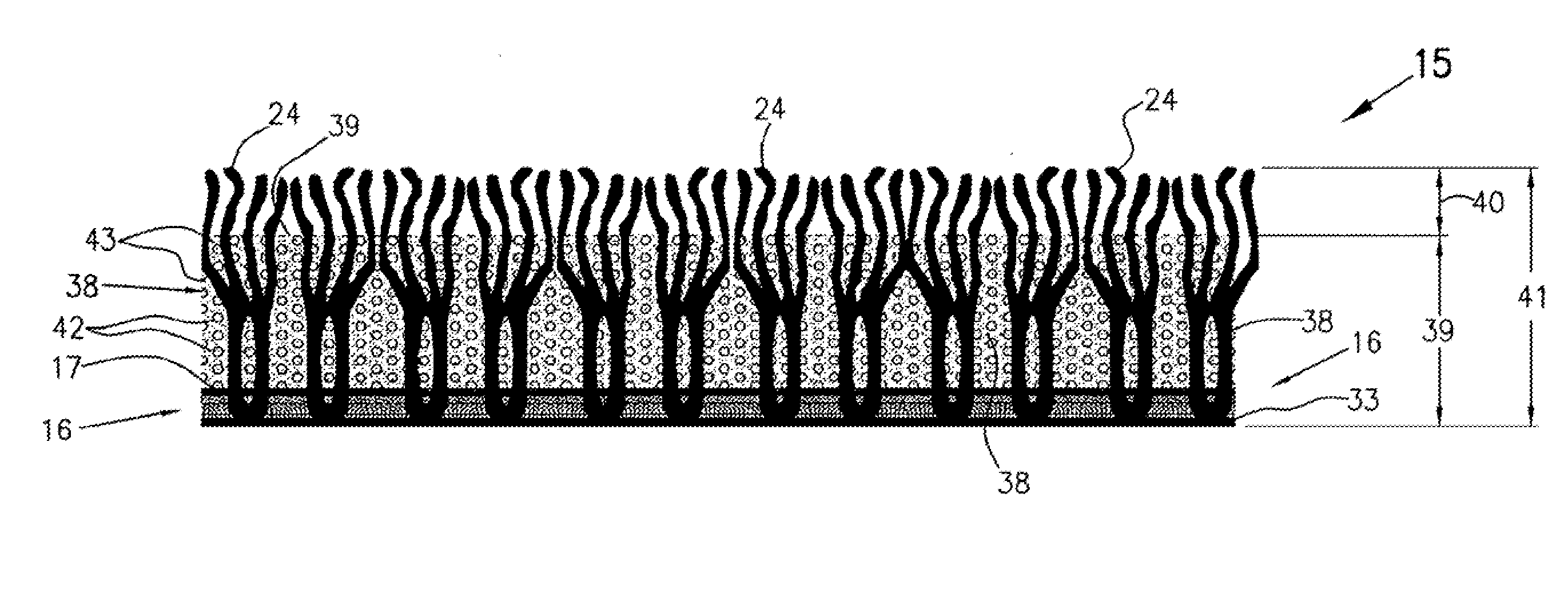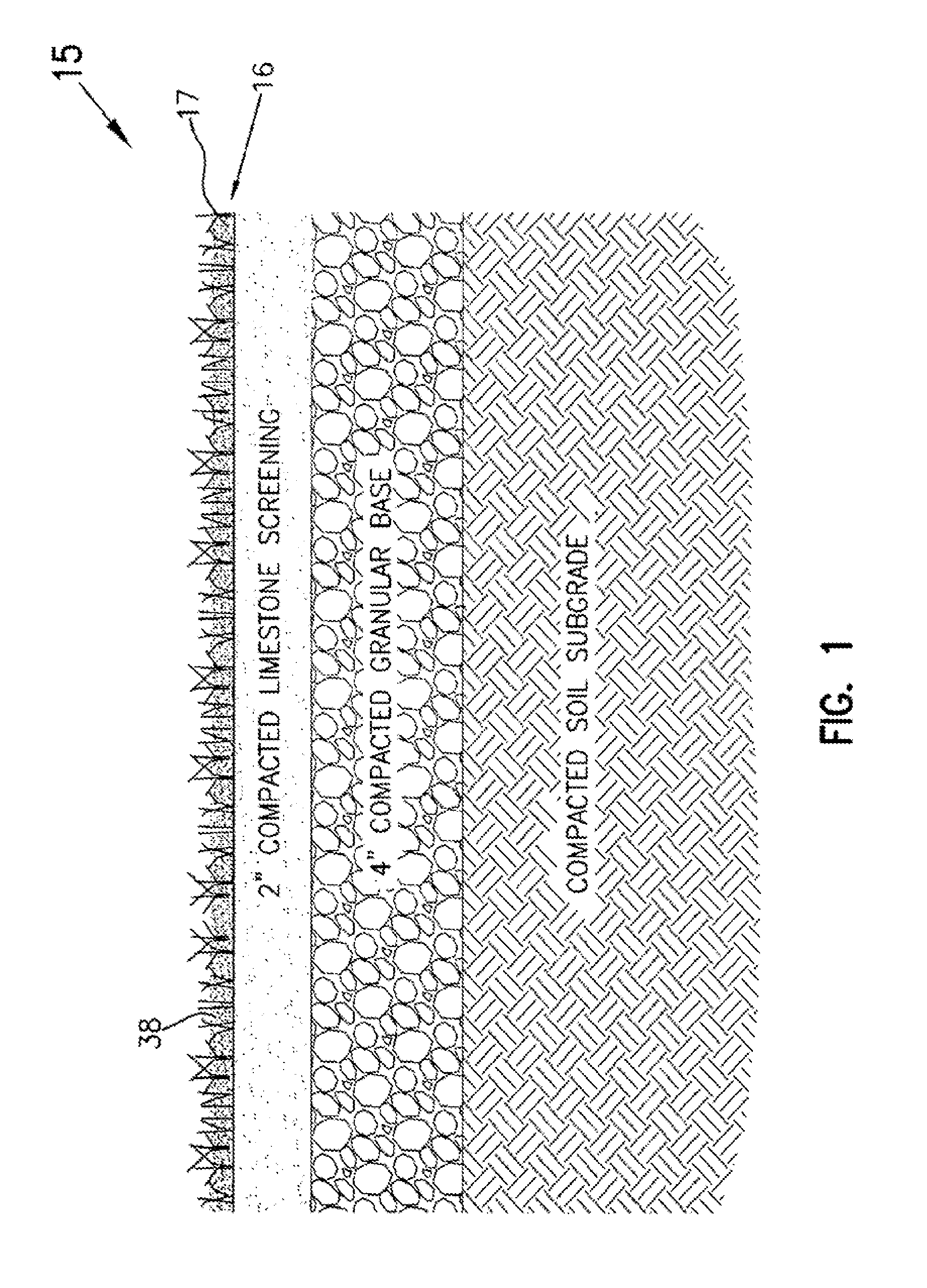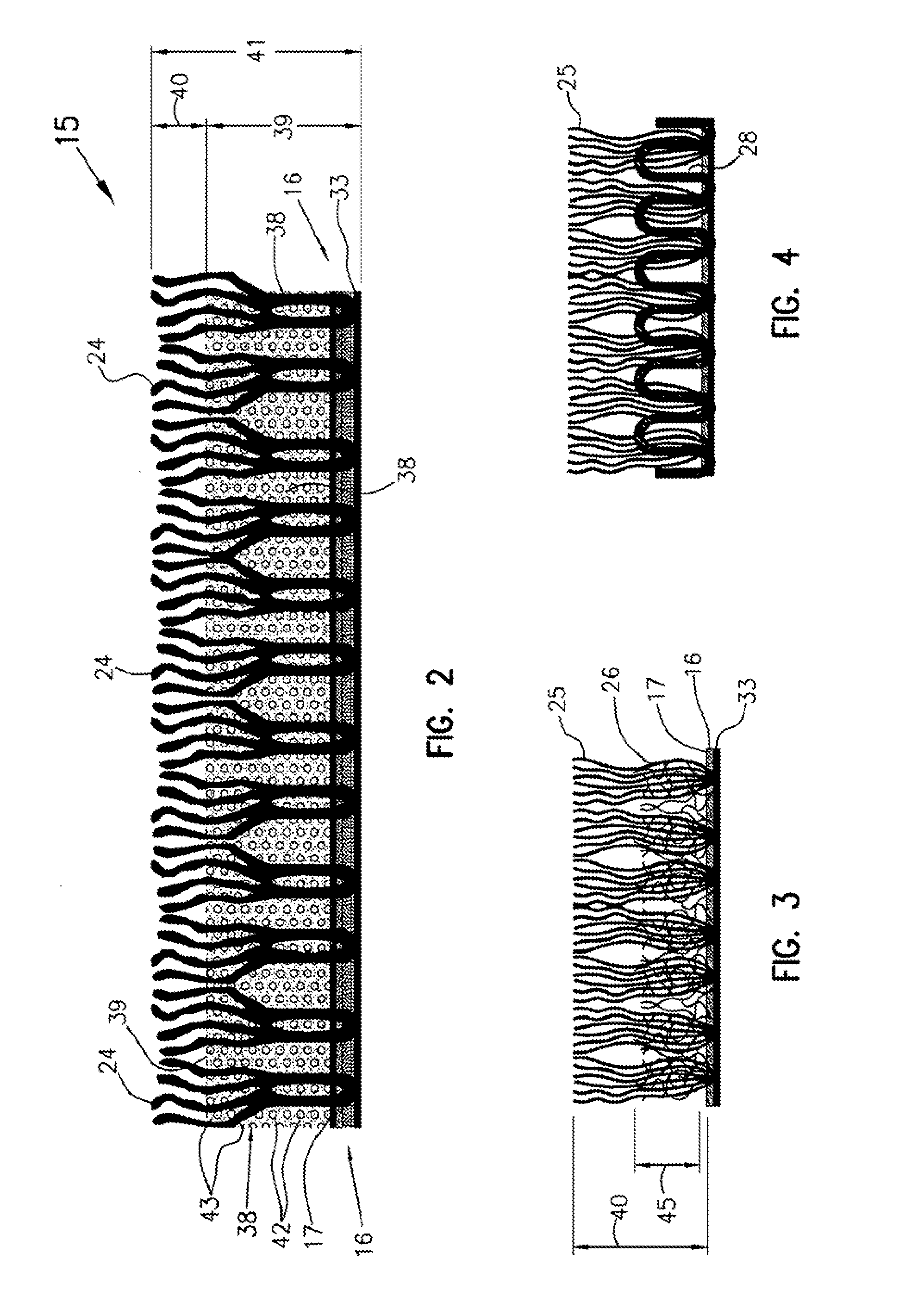Method of Producing a Woven Artificial Turf
a technology of artificial turf and woven fibers, applied in the field of artificial turf, can solve the problems of difficult programing and manufacturing of tufted turf of different colors and designs
- Summary
- Abstract
- Description
- Claims
- Application Information
AI Technical Summary
Problems solved by technology
Method used
Image
Examples
first embodiment
[0046]FIG. 2 shows the woven artificial turf system. As shown, in this embodiment the turf includes a primary backing layer 16 and a plurality of upstanding synthetic ribbons 24, representing blades of grass, extending upwardly from the upper surface 17 of backing layer 16. In this embodiment, ribbons 24 are fibrillated or slit-film extruded polyethylene ribbons. Fibrillation means that the yarn is of a flat, tape-like character and includes longitudinally extending slits across its width. With light brushing, these slits tend to split along the slits into several individual free standing strands of a width that is thinner then the full width of the yarn and thereby more closely resembles blades of grass. The Slit film-LSR yarn manufactured by Thiolon of Dayton, Tenn. may be used in the preferred embodiment.
[0047]As shown, an infill layer 38 is provided on the top surface 17 of backing layer 16. Infill layer 38 in this embodiment is a mixture of rubber 42 and sand 43 particles and i...
second embodiment
[0050]FIG. 3 shows a second embodiment in which the vertically extending ribbons comprise two different types of ribbon material. In this embodiment, the ribbons include a first type of ribbon 25, which is non-texturized, cut, long pile, multifilament ribbon, and a second type of ribbon 26, which is texturized, cut, short pile, multifilament ribbon.
[0051]Multifilament ribbon is not fibrillated. The PE-Monofilament ribbon manufactured by Thiolon of Daton, Tenn. may be used in the this embodiment.
[0052]Textured yarns are yarns that develop a desired stretch and bulk on subsequent processing. When woven or knitted into fabric, the cover, hand, and other aesthetics of the finished fabric better resemble the properties of the fabric constructed from spun yarn. Texturing is the process of crimping, imparting random loops, or otherwise modifying continuous filament yarn to increase cover, resilience, abrasion resistance, warmth, insulation, and moisture absorption or to provide a different...
fourth embodiment
[0058]FIG. 5 shows a This embodiment is similar to the embodiment shown in FIG. 3. However, in this embodiment, while long pile elements 25 are non-texturized, cut, long pile, multifilament ribbons, ribbons 29 are non-texturized, cut, short pile, fibrillated ribbons. Referring now to FIG. 11, ribbons 25 may be formed by weaving in as yarns 22 and 23 multifilament strands and weaving in as yarns 20 and 21 fibrillated strands. The pile height may be adjusted by either using a shrinking yarn type for pile elements 20 and 21 or by the mechanical adjustment of the weaving machine as discussed above with respect to the embodiment shown in FIG. 3. As with the embodiments shown in FIG. 3 and FIG. 4, this embodiment does not include an infill layer. However, it is contemplated that this embodiment may be used with an infill layer that extends some distance up the length of ribbons 25.
PUM
| Property | Measurement | Unit |
|---|---|---|
| length | aaaaa | aaaaa |
| length | aaaaa | aaaaa |
| height | aaaaa | aaaaa |
Abstract
Description
Claims
Application Information
 Login to View More
Login to View More - R&D
- Intellectual Property
- Life Sciences
- Materials
- Tech Scout
- Unparalleled Data Quality
- Higher Quality Content
- 60% Fewer Hallucinations
Browse by: Latest US Patents, China's latest patents, Technical Efficacy Thesaurus, Application Domain, Technology Topic, Popular Technical Reports.
© 2025 PatSnap. All rights reserved.Legal|Privacy policy|Modern Slavery Act Transparency Statement|Sitemap|About US| Contact US: help@patsnap.com



